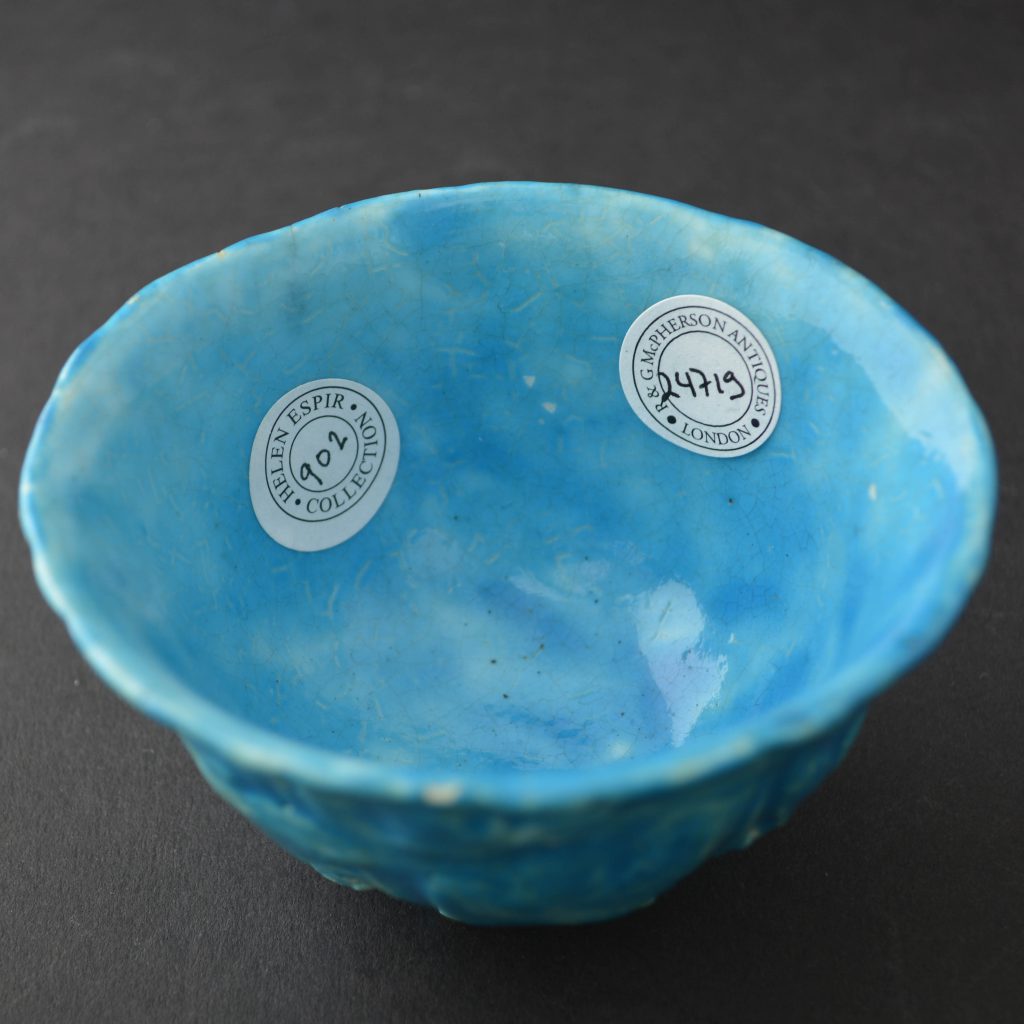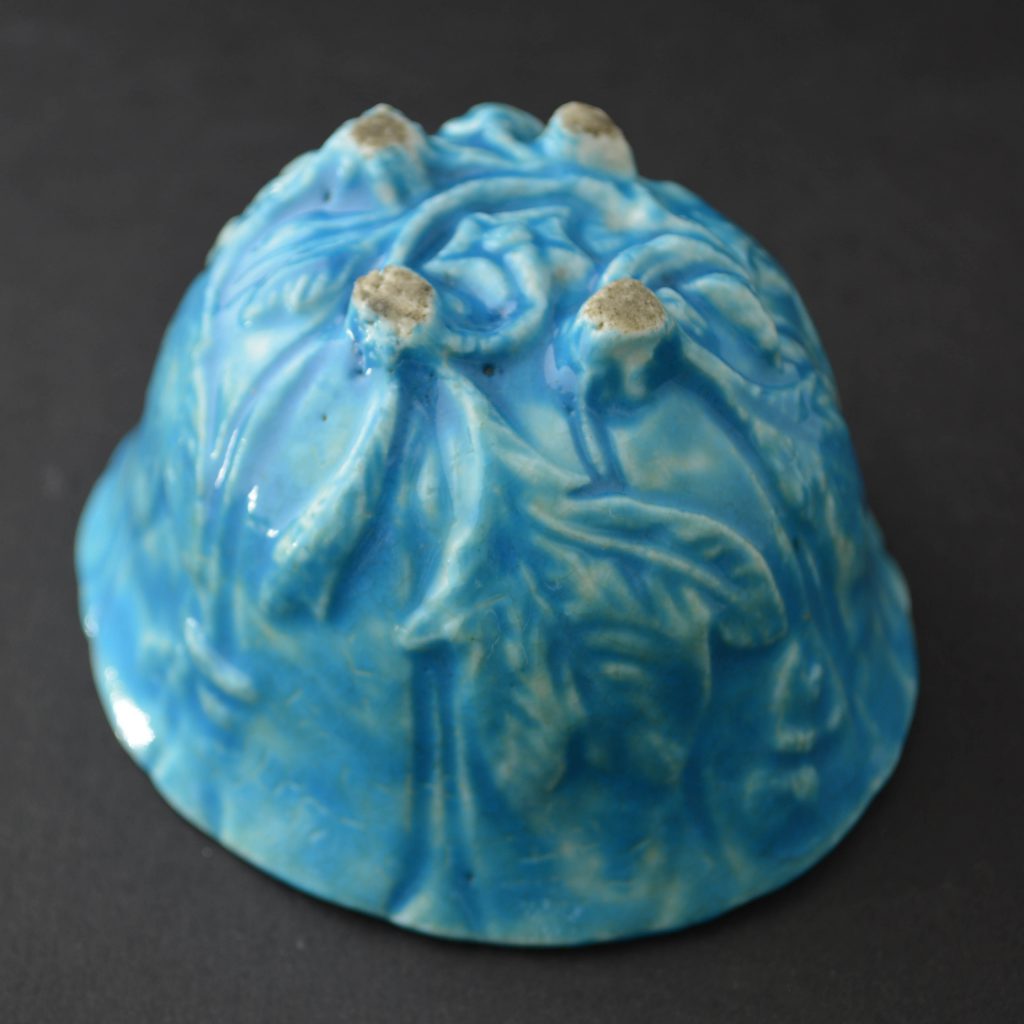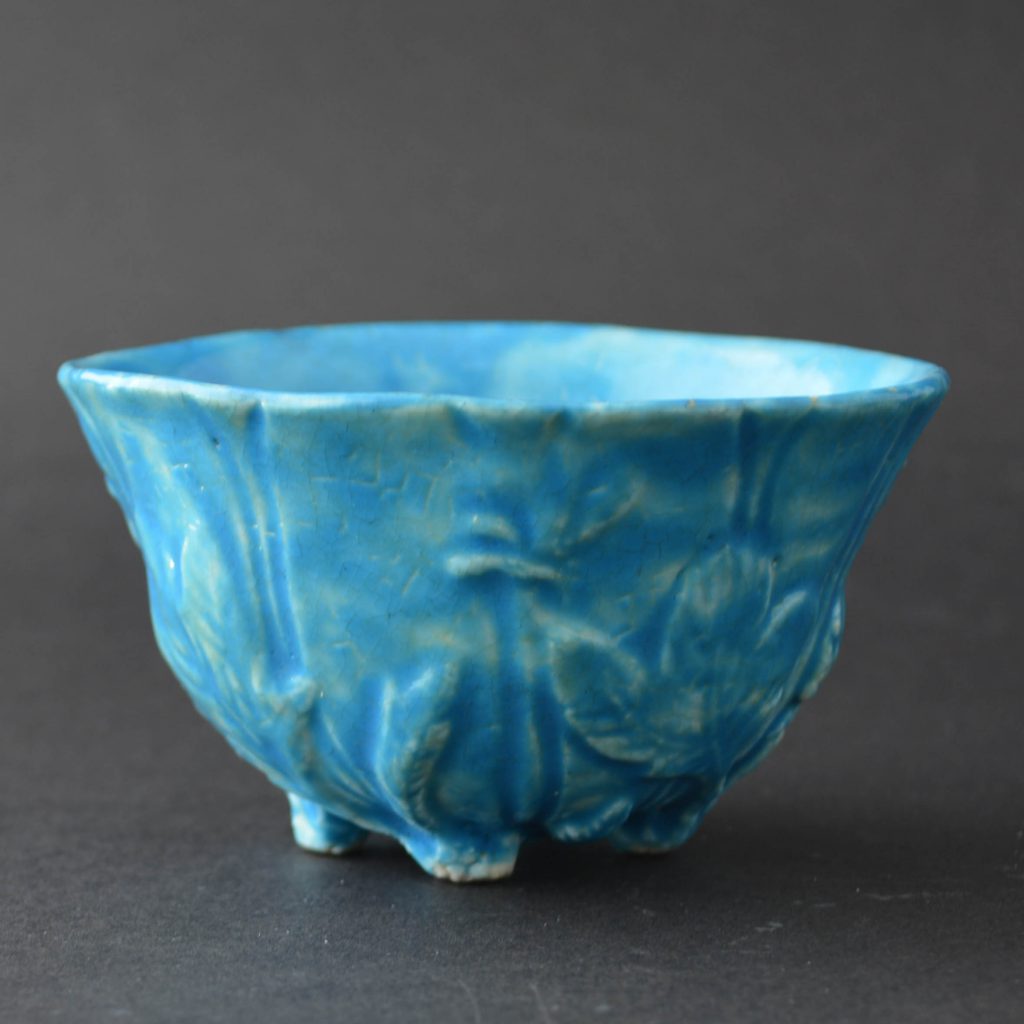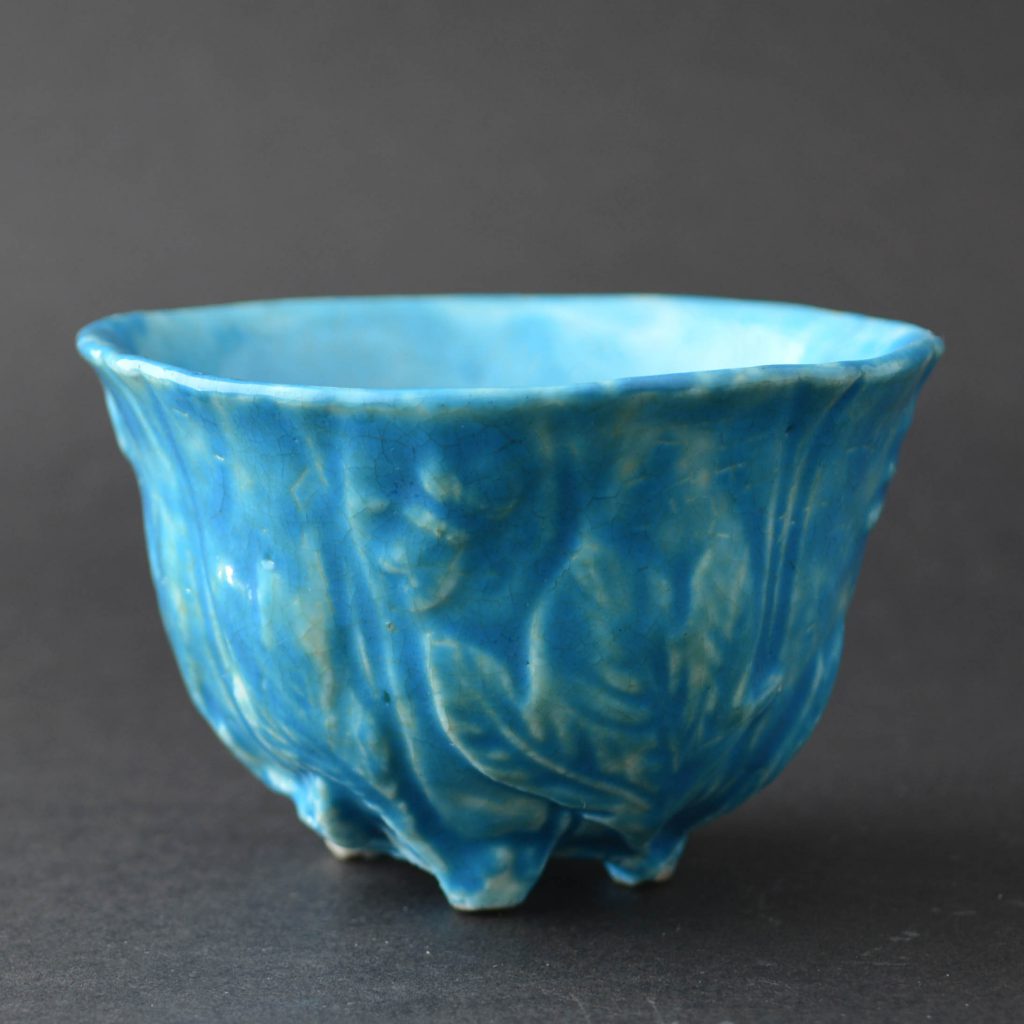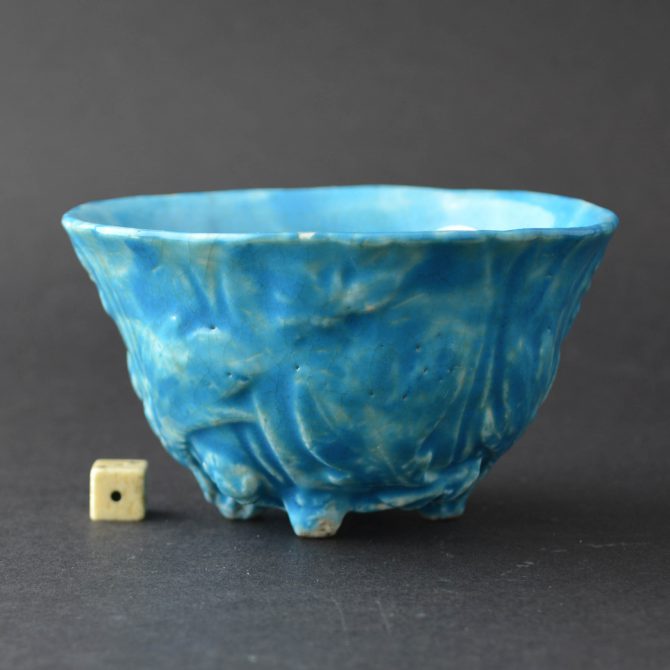
A Rare 17th Century Blanc de Chine Porcelain Cup with Early English Decoration c.1745 – 1750
A rare 17th century Blanc de Chine wine cup enamelled in London in c.1745-1750 using thick turquoise to try to imitate Chinese turquoise glazed ‘Biscuit Porcelain’ .
SOLD
- Condition
- In excellent condition, one minute glaze flake to the rim c.2 x 1 mm. The enamel has crawled as is the way with this thick turquoise.
- Size
- Length : 9 cm (3 1/2 inches)
- Provenance
- R and G McPherson Antiques, 4th April 2006. The Helen Espir Collection of European Decorated Chinese Export Porcelain : "a member of the Oriental Ceramic Society and collector, with her husband. Having made a typical collection of Song and provincial Ming blue and white, they decided to concentrate on what used to be called `clobbered` porcelain. She is the author of the standard work on the subject, European Decoration on Oriental Porcelain,2005, the first to examine the work of European decorators on Chinese porcelain throughout the eighteenth and nineteenth centuries, focusing on enamellers in Holland, Germany and England. She has learned Chinese." From Provenance ; Collectors, Dealers & Scholars : Chinese Ceramics in Britain & America (Roy Davids, Dominic Jellinek, Privately Printed, 2011. ISBN 978-0-9570148-0-0).
- Stock number
- 24719
Information
English Decoration on White Chinese Porcelain :
This type of English enamel decoration on Chinese export porcelain should be seen in a different way to what is referred to as `over-decorated` or `clobbered` porcelain. Those terms refer to Chinese porcelain that was imported into Europe as finished articles, but were either too plain for merchants to sell or their profits could be enhanced by adding enamels over the existing Chinese decoration. The present example was plain white when it arrived in England, it would not have been salable and so no merchant would have ordered it to retail. However, James Giles must have ordered allot of white porcelain specifically for decoration at his workshop in London. The shapes ordered were the lasted fashion in Europe as was the decoration he added. To my mind this makes these objects separate and distinct from other Chinese porcelain, China only provided the blank `canvas` and even that was of a form dictated to by Europe. For this reason these objects could primarily be see as English, they would have been totally alien to the Chinese.
A Model of Guanyin in the Victoria and Albert Museum, London.
Museum number C.58-2004, Gallery location World Ceramics, room 145, case 21, shelf 3
 This piece shows the very distinctive turquoise enamel used in the present example.
This piece shows the very distinctive turquoise enamel used in the present example.
